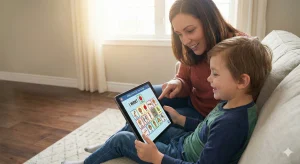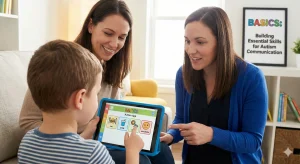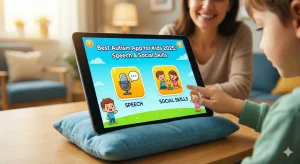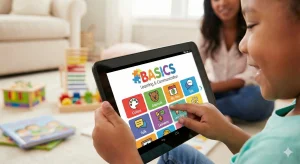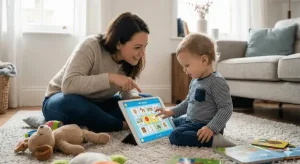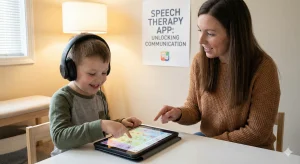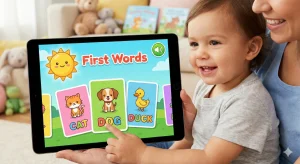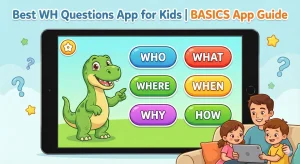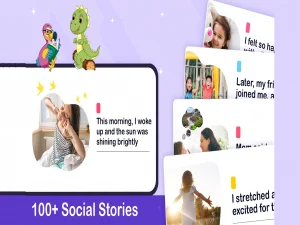Occupational Therapy for ADHD: Build Focus and Calm
By Wellness Hub
Last Updated: October 28, 2025
Does your child struggle to sit still, follow directions, or complete simple daily tasks? You’re not alone. Many parents of children with ADHD feel exhausted trying to balance love, patience, and structure — especially when attention spans vanish and emotions run high. The good news is that occupational therapy (OT) can help. Using play, sensory input, and structured routines, OT teaches children how to regulate their energy, improve focus, and feel calm from the inside out.
What Is Occupational Therapy and How Does It Help ADHD?
Occupational therapy is all about helping children do the things that matter most — from learning and playing to getting dressed and eating independently. For kids with ADHD, the challenges often go beyond simple inattention. They may have trouble processing sensory information, planning actions, or managing frustration.
An occupational therapist observes how your child interacts with their environment, identifies barriers, and designs hands-on activities that strengthen focus, body awareness, and emotional balance. These might include obstacle courses, balance games, or calming routines disguised as fun.
According to the American Occupational Therapy Association (AOTA), early OT intervention helps children with ADHD improve attention control, self-regulation, and executive functioning skills through structured play.
Causes and Challenges of ADHD
ADHD isn’t caused by bad parenting or too much screen time — it’s a neurodevelopmental condition where the brain processes attention, impulse control, and motivation differently. Genetics play a strong role, and factors like premature birth or early environmental stress may contribute.
Children with ADHD often face daily hurdles that others might not even notice. Tasks like tying shoes, sitting through a meal, or focusing on a story can feel exhausting. They may act impulsively, forget instructions, or react strongly to noise, textures, or emotions.
These challenges can lead to frustration for both child and parent — but understanding that it’s the brain wiring, not behavior, helps families respond with empathy instead of blame. With the right strategies, children can learn how to focus, plan, and regulate emotions more effectively.
Also Read: ADHD in Adults: Daily Struggles & Proven Tips to Cope
Signs Your Child May Benefit from Occupational Therapy
If your child’s energy levels, focus, or emotional ups and downs feel hard to manage, OT might help. Watch for:
- Difficulty completing schoolwork or following simple steps.
- Constant fidgeting, restlessness, or sensory seeking.
- Meltdowns during transitions or noisy environments.
- Struggles with fine motor skills like writing or buttoning.
- Emotional outbursts or frustration when faced with limits.
Occupational therapists use structured observation and standardized assessments to identify whether these patterns come from sensory overload, poor coordination, or attention challenges — and then create a personalized plan.
Read more: 0–12 Month Guide: Early Signs Baby Needs Occupational Therapy
Goals of Occupational Therapy for ADHD
Occupational therapy goes beyond calming techniques; it builds the foundation for lifelong self-management. Each goal is designed to strengthen specific developmental skills while keeping therapy fun and achievable.
- Improve attention span: Helping children focus longer on age-appropriate tasks through visual cues and graded challenges.
- Enhance self-regulation: Teaching kids to recognize body signals — when they’re overexcited or tired — and use calming tools.
- Develop motor planning: Strengthening coordination between brain and body to make movements smoother and more intentional.
- Boost confidence: Celebrating small successes helps children feel capable, motivated, and proud of their effort.
- Support daily independence: Building skills for dressing, eating, handwriting, and organizing routines.
Each of these goals works together to help a child not just “behave better,” but truly thrive in everyday environments — school, home, and play.
How Occupational Therapists Build Focus and Calm
Occupational therapy sessions look like play — but every activity has a purpose. Here’s how therapists help kids strengthen focus and calm:
- Sensory Regulation Activities: Swinging, deep-pressure squeezes, or heavy-work tasks help balance the nervous system.
- Visual Schedules: Predictable routines reduce anxiety and improve organization.
- Movement Breaks: Short bursts of physical activity refresh focus between tasks.
- Reward Systems: Positive reinforcement encourages consistency and motivation.
- Mind-Body Games: Simple yoga, blowing bubbles, or breathing exercises teach emotional awareness.
Each child’s therapy plan is customized according to their sensory and emotional profile — helping them feel in control of their body and mind.
Know more: Early Intervention & OT for 3-Month-Old Sensory Growth
Simple At-Home OT Ideas to Improve Focus
Parents play a powerful role in carrying therapy home. Try these simple, everyday ideas recommended by occupational therapists:
- Create a calm corner: A quiet space with soft textures, dim light, and sensory toys for self-soothing.
- Build structure: Use picture charts for routines like getting dressed or packing school bags.
- Add movement breaks: Let your child push furniture, water plants, or carry groceries for sensory balance.
- Engage through play: Games like “Simon Says,” puzzles, or beanbag tosses strengthen focus and listening.
- Practice deep pressure: Hugs, squishes, or rolling in a blanket can instantly calm the body.
Small, consistent steps practiced daily have more impact than occasional long sessions.
Sensory Integration: Helping Kids Feel Regulated
Children with ADHD may experience sensory overload — where bright lights, textures, or sudden sounds feel overwhelming. Sensory integration therapy helps them organize this input.
A sensory diet is a set of personalized activities that meet your child’s unique sensory needs. This might include:
- Jumping, swinging, or climbing to release extra energy.
- Play-dough or clay work to strengthen fine motor control.
- Gentle brushing or joint compressions for grounding.
- Listening to rhythmic sounds or white noise to stay calm.
Over time, these activities teach the brain to process sensations more smoothly — reducing frustration and improving emotional balance.
Expert Insights: Real-Life Example
Riya, a cheerful 6-year-old, used to struggle with sitting still in class and following instructions. Her parents felt lost — every day started with chaos and ended with tears. After beginning occupational therapy, her therapist noticed Riya needed heavy-work input to calm her body.
Through activities like pushing weighted carts, threading beads, and using picture schedules, Riya gradually learned how to manage her energy. Within weeks, her teacher noticed she was able to complete worksheets and participate in circle time.
Her mom shared, “It wasn’t magic — it was consistency. The therapist showed us what to do at home, and that made all the difference.”
Stories like Riya’s remind us that progress doesn’t happen overnight, but with patience and guidance, every small win is worth celebrating.
When to Seek Professional Help
If focus struggles or daily meltdowns are affecting your child’s learning or relationships, professional support can help. Seek guidance when:
- School reports ongoing attention or handwriting issues.
- Your child avoids activities they used to enjoy.
- Everyday tasks turn into emotional battles.
An early evaluation from a pediatric occupational therapist can uncover hidden sensory or motor challenges and create a step-by-step plan for progress. Early support builds lifelong skills for calmness and confidence.
How Wellness Hub Supports Parents and Children
At Wellness Hub, we believe every child deserves the chance to learn, play, and grow with confidence. Our certified pediatric occupational therapists specialize in ADHD, sensory processing, and emotional regulation using evidence-based, play-driven techniques.
Parents are active partners in therapy. We guide you through easy home carryover plans, so your child’s growth continues beyond sessions. Whether you’re seeking online consultations or in-person support, Wellness Hub provides expert-led, compassionate care tailored to your child’s developmental stage.
Visit Wellness Hub to explore programs designed to build focus, coordination, and calm — one step at a time.
Conclusion
Occupational therapy is more than just a set of exercises — it’s a bridge between your child’s potential and everyday success. For children with ADHD, OT nurtures focus, self-control, and emotional balance through play and purposeful routines. With steady practice, patience, and professional guidance, your child can transform restless energy into meaningful progress. Every small milestone — a completed puzzle, a calm transition, a smile of achievement — is proof that growth is happening. At Wellness Hub, expert pediatric occupational therapists are here to support you and your child on this journey toward calm, confidence, and lasting independence.
Frequently Asked Questions:
1. How does occupational therapy help a child with ADHD?
Occupational therapy helps children with ADHD improve focus, control their energy, and manage daily tasks better. Therapists use play, movement, and calming activities to teach self-regulation and attention skills.
2. What does an occupational therapist do for kids with ADHD?
An occupational therapist observes how a child plays, learns, and handles daily routines. They plan fun, skill-building activities that help children stay organized, calm, and confident in school and at home.
3. At what age should a child with ADHD start occupational therapy?
Children as young as 3 years old can benefit from OT. Early therapy helps build focus and calm before school routines become harder to manage.
4. Can I do occupational therapy activities at home?
Yes, you can. Simple games like “Simon Says,” puzzles, or pushing and pulling activities help children learn focus and self-control. Your therapist can guide you on what works best for your child.
5. What are some common occupational therapy activities for ADHD?
Therapists use sensory play, obstacle courses, fine motor games, and deep-pressure exercises to help children with ADHD stay focused and calm.
6. How long does it take for occupational therapy to work?
Every child is different. Some parents notice small changes in 3–4 weeks, while bigger improvements take a few months of regular sessions and home practice.
7. Is occupational therapy better than medication for ADHD?
OT doesn’t replace medicine but can work alongside it. Occupational therapy teaches real-life skills like focus, time management, and self-regulation, helping children cope better every day.
8. How do I know if my child really needs occupational therapy?
If your child often struggles with attention, handwriting, following routines, or controlling emotions, an occupational therapist can help assess and support those challenges.
9. Can occupational therapy help with my child’s hyperactivity?
Yes. OT includes sensory and movement-based activities that help release extra energy safely, making it easier for children to sit still and pay attention.
10. Where can I find trusted occupational therapists for ADHD?
You can connect with certified pediatric occupational therapists at Wellness Hub. They offer expert guidance and personalized therapy plans to help your child stay focused, calm, and confident.
About Author:
Sonali Sharma, Occupational Therapist
Sonali Sharma is a skilled Occupational Therapist at Wellness Hub, with over three years of experience in supporting children with developmental, behavioral, and learning challenges. She holds a Bachelor’s in Occupational Therapy (BOT) from Amity University and has worked with leading institutions such as NIMHANS Bengaluru and ESIC Hospital Faridabad.
At Wellness Hub, Sonali provides online occupational therapy sessions tailored to each child’s needs. She specializes in pediatric therapy, autism support, sensory integration, and developmental skill-building, helping children strengthen motor skills, improve focus, and become more independent in daily life.
Her therapy style is child-centered, play-based, and evidence-driven—making sessions both effective and enjoyable for kids. Sonali also equips parents with practical home therapy strategies to extend progress beyond sessions.
Passionate about empowering families, Sonali believes in creating a nurturing space where children can thrive while parents feel supported every step of the way.
Book your Free Consultation Today
Parent/Caregiver Info:
Client’s Details:
* Error Message
